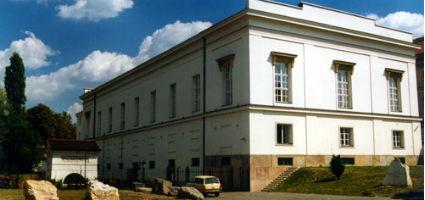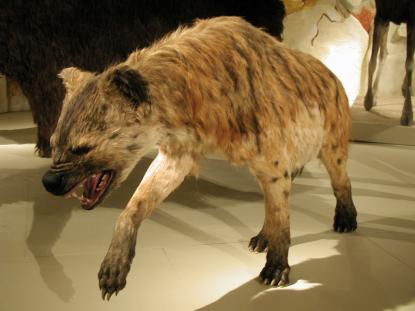2024. May 6. Monday
Hungarian Natural History Museum - Budapest
 |
Address: 1083, Budapest Ludovika tér 2-6.
Phone number: (1) 210-1085, (1) 303-6193
E-mail: mtminfo@nhmus.hu
Opening hours: Mon, Wed-Sun 10-18
|
The exhibition has closed for visitors.
2008.04.02. - 2008.11.17.
Museum tickets, service costs:
|
Individual ticket for adults
(valid for the permanent exhibitions)
|
2200 HUF
|
/ capita
|
|
Individual ticket for students
(valid for the permanent exhibitions, 6-26 years of age)
|
1100 HUF
|
/ capita
|
|
Group ticket for students
(to the Dino Garden )
|
900 HUF
|
/ capita
|
|
Individual ticket for pensioners
(valid for the permanent exhibitions, 62-70 years of age)
|
1100 HUF
|
/ capita
|
|
Individual supplementary fee
|
500 HUF
|
Gyima the mammoth baby mummy arrived in Budapest at 9.54 on 14 March 2008. The star of the exhibition entitled 'Ice Age' by the Museum of Natural Science is 40 thousand years old.
The exhibition deals with the last Ice Age, the reasons of its occurring, its flora and fauna, climate changes and the role of humans in its development. An exhibition about Ice Age would be impossible without a mammoth. This is why Gyima arrived to Budapest from Korea through Vienna.

The find is unique since it has fur and skin. Gyima was found in Siberia in 1977. After its conservation it was moved to the Zoology Institute in Saintpetersbur.
Gyima is shown in a special showcase among strict rules. - the temperature cannot be higher than 24 Celsius - the brilliance cannot be more than 50 lux - humidity must be 50-60% so that the mummy does not dry and break.
There are only a few people who can touch Gyima. After the find arrived, the employees of the institution of Saintpetersburg help in the unwrapping and setting it into the showcase. Andrej stays next to the mammoth during the exhibition.
Ever since 1980 Gyim a has been shown in the USA, Japan, Germany, France, Finland and Korea. Gyima can be seen from 2 April to 8 June 2008 in Hungary. The exhibition entitled 'Ice Age' is open from 2 April to 17 November 2008. Even though Gyima leaves earlier for Spain, its scientific and authentic reconstruction can be seen until the end.
Mammoth mummy finds are very important for science. Examinations like DNA studies can be performed on them that provide us with a clearer picture of climate change. These results can help us understand global climate changes of our present times.
Mammoths belong to the first victims of human activity. Their hunt played a major role in their distinction.

The find is unique since it has fur and skin. Gyima was found in Siberia in 1977. After its conservation it was moved to the Zoology Institute in Saintpetersbur.
Gyima is shown in a special showcase among strict rules. - the temperature cannot be higher than 24 Celsius - the brilliance cannot be more than 50 lux - humidity must be 50-60% so that the mummy does not dry and break.
There are only a few people who can touch Gyima. After the find arrived, the employees of the institution of Saintpetersburg help in the unwrapping and setting it into the showcase. Andrej stays next to the mammoth during the exhibition.
Ever since 1980 Gyim a has been shown in the USA, Japan, Germany, France, Finland and Korea. Gyima can be seen from 2 April to 8 June 2008 in Hungary. The exhibition entitled 'Ice Age' is open from 2 April to 17 November 2008. Even though Gyima leaves earlier for Spain, its scientific and authentic reconstruction can be seen until the end.
Mammoth mummy finds are very important for science. Examinations like DNA studies can be performed on them that provide us with a clearer picture of climate change. These results can help us understand global climate changes of our present times.
Mammoths belong to the first victims of human activity. Their hunt played a major role in their distinction.
